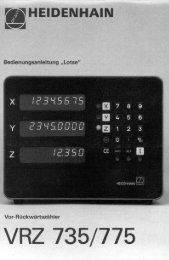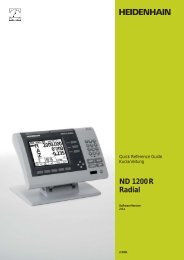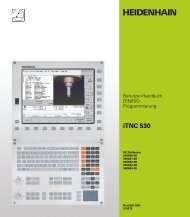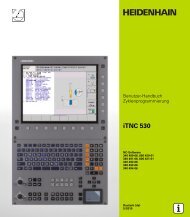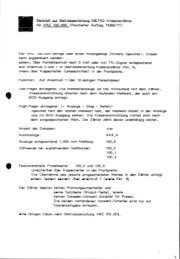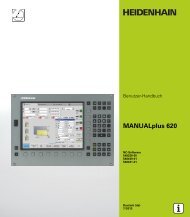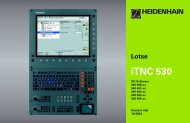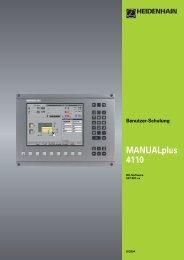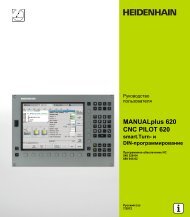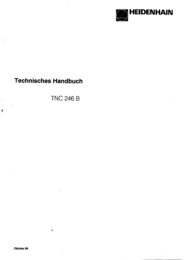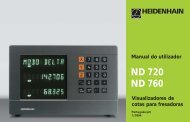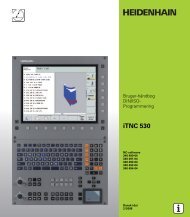User's Manual ISO TNC 360 (260020xx, 280490xx) - heidenhain
User's Manual ISO TNC 360 (260020xx, 280490xx) - heidenhain
User's Manual ISO TNC 360 (260020xx, 280490xx) - heidenhain
Create successful ePaper yourself
Turn your PDF publications into a flip-book with our unique Google optimized e-Paper software.
8 Cycles<br />
8.3 SL Cycles<br />
<strong>TNC</strong> <strong>360</strong><br />
Subcontour list (SL) cycles are very powerful cycles that enable you to mill<br />
any required contour. They are characterized by the following features:<br />
• A contour can consist of superimposed subcontours. Pockets and<br />
islands compose the subcontours.<br />
• The subcontours are programmed as subprograms.<br />
• The control automatically superimposes the subcontours and calculates<br />
the points of intersection of the subcontours with each other.<br />
Cycle G37: CONTOUR GEOMETRY contains the subcontour list and is a<br />
purely geometric cycle, containing no cutting data or infeed values.<br />
The machining data are defined in the following cycles:<br />
• PILOT DRILLING G56<br />
• ROUGH-OUT G57<br />
• CONTOUR MILLING G58/G59<br />
Each subprogram defines whether radius compensation G41 or G42<br />
applies. The sequence of points determines the direction of rotation in<br />
which the contour is to be machined. The control deduces from these<br />
data whether the specific subprogram describes a pocket or an island:<br />
• For a pocket the tool path is inside the contour<br />
• For an island the tool path is outside the contour<br />
• The way the SL contour is machined is determined by MP 7420.<br />
• We recommend a graphical test run before you machine the part. This will show whether all contours were<br />
correctly defined.<br />
• All coordinate transformations are allowed in the subprograms for the subcontours.<br />
• F and M words are ignored in the subprograms for the subcontours.<br />
The following examples will at first use only the ROUGH-OUT cycle.<br />
Later, as the examples become more complex, the full range of possibilities<br />
of this group of cycles will be illustrated.<br />
Programming parallel axes<br />
Machining operations can also be programmed in parallel axes as SL<br />
cycles. The parallel axes must lie in the working plane. (In this case,<br />
graphic simulation is not available).<br />
Input<br />
Parallel axes must be programmed in the first coordinate block (positioning<br />
block, I,J,K block) of the first subprogram that is called with cycle G37:<br />
CONTOUR GEOMETRY. All other coordinates are then ignored.<br />
8-15



